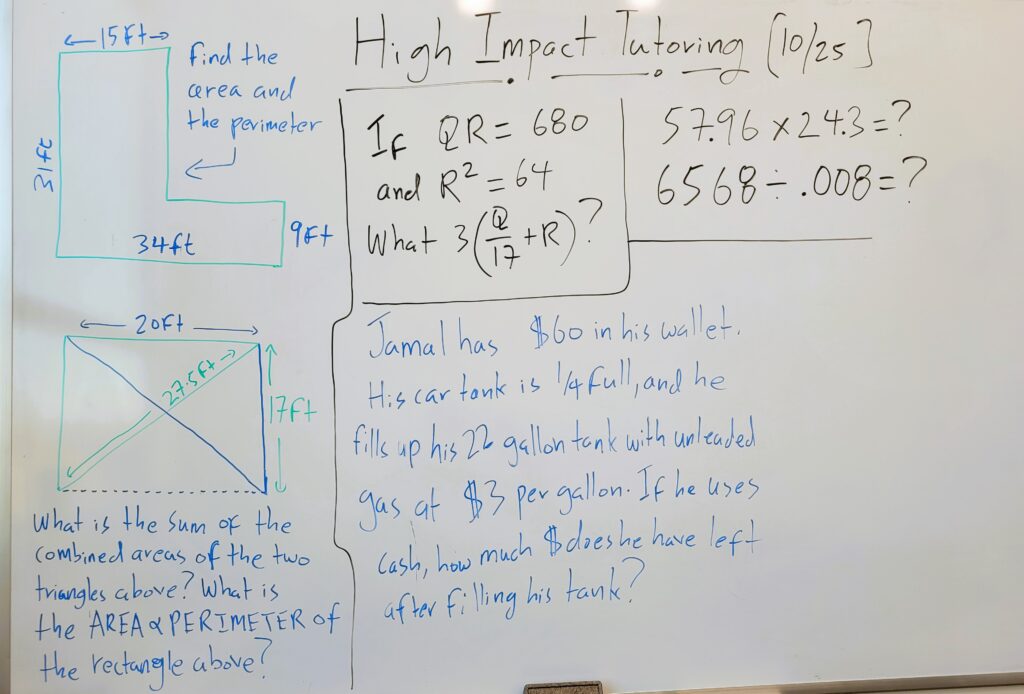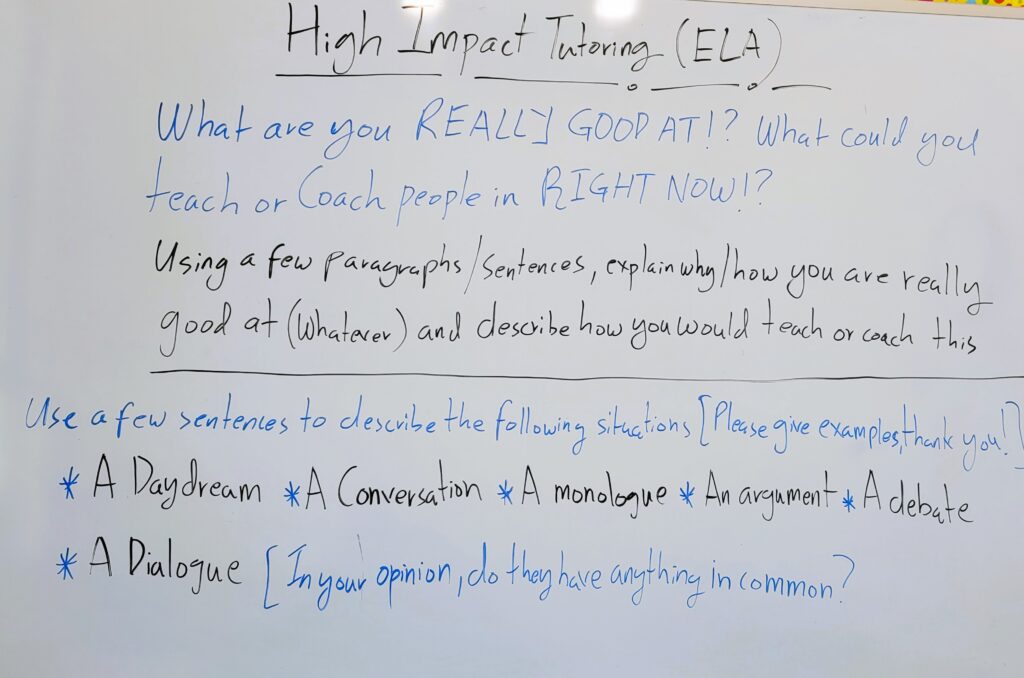Lana Learn academic coaches work on shifting students’ mindsets to give them control over their academic success.
In last month’s update, I introduced the fall semester cohort of the High-Impact tutoring (HIT) program here at Thurgood Marshall Academy (TMA). I worked with school staff to select 24 students for Math or English Language Arts, six of whom we selected for both subjects. These students’ academic profiles indicate they are not sufficiently challenged by their current academic curriculum. Therefore, my role is to engage, coach, tutor, teach, mentor “provoke and inspire” them. We are working on shifting students’ mindsets from a pattern of boredom to being fully-engaged, high achievers. I have focused on their academic achievements thus far in the semester. Several of the program participants were recognized during Thurgood Marshall Academy’s Honor roll assembly for their academic performances.
Student data trends
December was a short month at TMA. As I write this, the winter break is underway and school doesn’t resume till Tuesday, January 2nd, 2024. In terms of academic performance, there haven’t been notable grade shifts since my last article. 70% of HIT participants enrolled in math continue to maintain a B or higher grade. Moreover, 100% of HIT participants enrolled in English language arts (ELA) continue to maintain a B or higher grade. Over 50% of HIT participants in both math and ELA have A grades.
However, it’s worth noting that four students: Petra Carlson, Latoya Young, Nevah Wilbanks, Darshaye Jones – have maintained a grade range between A and A+ in both math and ELA all semester!
Along with all the impressive academic data and grade performances, I also acknowledged in my last article that we did have HIT participants grades with C and D grades. I pointed out that those students all had overdue class work. After talking with teachers, I found that one of the biggest distinctions between students above and below a B grade is actually very simple: submitting assignments. In many cases, if that’s happening in one class, it’s happening in other classes – a domino effect. Therefore, students end up having multiple assignments due across various classes.
Holding students accountable
How do I address this with my HIT students? Well, thankfully, teachers have begun giving me email updates on students who have overdue assignments. In addition to viewing their grades online, I can see what assignments are due and when. Moreover, I can see the breakdown of how each assignment contributes to the overall grade. This information is very useful as I converse with my students about their classes and grades. I am happy to report that students with grades lower than B have started completing overdue assignments and should see grade improvements next quarter. As for the HIT students maintaining B or higher grades? Not surprisingly, they tend to turn in their work on time. They approach each class assignment as if it counted 100% to their grade!
When we return from the winter break on January 2, we will have three weeks left till the end of the fall semester and this HIT cohort. I anticipate some students will still have overdue class assignments to turn in. Also, I imagine that, for most of them, my constant, “Hey guys, let’s focus! I only have you for this semester, not the whole year!” refrain will begin to sink in. What lasting impact are they going to take away from the sessions and their time with me? I will update you on those final three weeks of the cohort in the next blog post.


